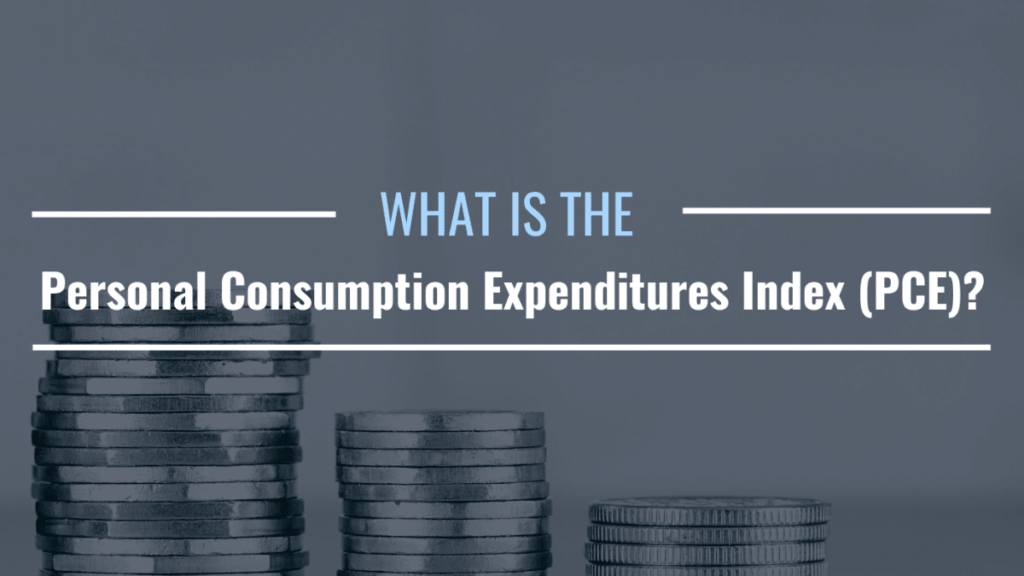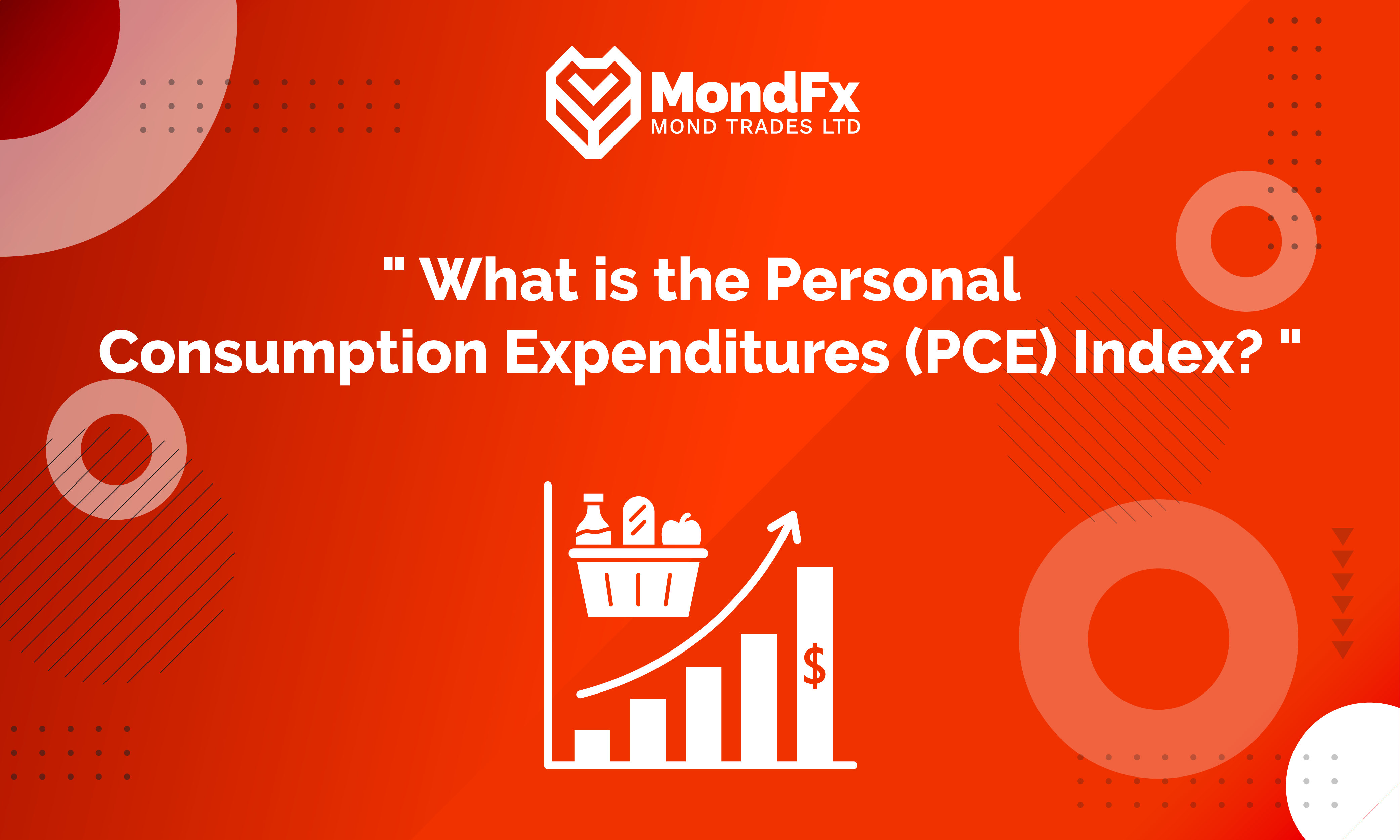The Personal Consumption Expenditures Index (PCE) is an economic statistic in the US Forex calendar that represents household spending over a specific period. The Bureau of Economic Analysis (BEA) publishes three key indexes monthly: personal income, personal consumption expenditures (PCE), and the PCE Price Index. The PCE Price Index measures changes in the prices of goods and services consumed in the US economy.
In 2012, the Personal Consumption Expenditures Index (PCE) became the Federal Reserve’s primary inflation gauge. This index is compared to the Consumer Price Index (CPI), which primarily focuses on consumer prices. Economists measure inflation using other metrics such as the Producer Price Index (PPI) and Gross Domestic Product (GDP).
More detailed explanations about the Personal Consumption Expenditures Index (PCE)
Personal consumption expenditures is one of the three main components of personal income and expenditure reports. Personal income reflects the amount of money consumers earn, while the Personal Consumption Expenditures (PCE) serves as a measure of consumer spending or consumption levels.
Personal consumption expenditures is a component utilized in personal income and expenditure reports to calculate the Personal Consumption Expenditures Index (PCE). This index serves as a measure of price changes, indicating whether prices have increased (positive inflation) or decreased (negative inflation).
The Bureau of Economic Analysis (BEA) publishes personal consumption expenditure data in both nominal (inflation-adjusted) and real (inflation-adjusted) terms. Personal consumption expenditures (PCE) serve as the foundation for the PCE price index. Moreover, by excluding food and energy prices from the PCE price index, the core PCE price index is derived.
How is the Personal Consumption Expenditures Index measured?
The Bureau of Economic Analysis (BEA) reports monthly aggregate and disaggregated values for personal consumption expenditures, broken down by goods (durable and nondurable) and services. Durable goods are items with a lifespan of more than three years and a relatively high price, such as automobiles, televisions, refrigerators, and furniture. Nondurable goods are considered “temporary” and typically have a lifespan of less than three years, including items like cosmetics, gasoline, and clothing.
The BEA utilizes the current dollar value of personal consumption expenditures, which incorporates inflation, to calculate the PCE price index. However, to determine the extent of price changes over time (monthly), the price index must reflect real values and exclude the effects of inflation. In other words, to compute this index, prices must be deflated.
In summary, both the PCE price index and the core PCE price index (excluding food and energy) indicate the extent to which personal consumption expenditures have increased or decreased from one period to the next. However, an analysis of the different components of the PCE price index (durable goods, nondurable goods, and services) reveals the extent of positive or negative inflation in various assets.

Comparison of the PCE Price Index and the CPI
The CPI is the most widely recognized economic index and typically receives more media attention. However, the Federal Reserve prefers to use the PCE price index when measuring inflation and overall economic stability in the United States.
( Personal Consumption Expenditures Price Index = PCE PI )
So why does the Federal Reserve prefer the PCE price index?
This is because this measure is composed of a broader spectrum of expenditures. The PCE price index is also weighted with data obtained from business reports, which is considered more reliable than the consumer reports used for the CPI. On the other hand, the CPI provides more transparent details in its monthly report. Similarly, economists can see price changes in categories such as grains, fruits, clothing, and vehicles with greater clarity.
Another difference between the PCE price index and the CPI is that the PCE price index employs a formula that allows for the calculation of changes in consumer behavior, even over short time periods. These adjustments are not made in the CPI formula.
These factors contribute to a more comprehensive measure of inflation. The Federal Reserve relies on the most detailed information from the PCE index because even the smallest amount of inflation indicates economic growth and a healthy economy.
Advantages and Disadvantages of the Personal Consumption Expenditures (PCE) Price Index
Personal consumption expenditures offer a overview of how the economy is performing. When people spend freely, it typically indicates a healthy economy. However, when their spending declines, it often signals underlying economic problems.

Advantages
The PCE price index is not as well-known to the public as the CPI, which is frequently reported by the financial press. While the CPI relies on household spending reports compiled by the Bureau of Labor Statistics (BLS) to determine price trends, the PCE price index is much broader in scope. This is because it collects data directly from businesses and corporations and also incorporates gross domestic product.
The Personal Consumption Expenditures Price Index (PCEPI) encompasses a broader range of goods and services, particularly including purchases by all households nationwide, whereas the Consumer Price Index (CPI) is limited to urban households.
The Personal Consumption Expenditures Price Index (PCEPI) exhibits less volatility compared to the Consumer Price Index (CPI), which can be significantly influenced by large price fluctuations in specific goods, such as gasoline.
Disadvantages
Despite its use by the Federal Reserve, the Personal Consumption Expenditures Price Index (PCEPI) faces certain challenges. One significant issue is its inclusion of gross domestic product (GDP) in its calculations. GDP is measured quarterly, while the PCE is reported monthly by the Bureau of Economic Analysis (BEA). To address this discrepancy, the agency must fill this data gap, which it does by incorporating monthly retail sales figures.
Another limitation of the Personal Consumption Expenditures Price Index (PCEPI) is its broad scope. It incorporates data from both the household and institutional sectors, including non-profit organizations, government agencies, and corporations. Conversely, the Consumer Price Index (CPI) is solely derived from data reported directly by consumers.
Examples of Personal Consumption Expenditures
As previously mentioned, the Personal Consumption Expenditures index is a financial metric that measures how consumers allocate their spending on goods and services. Identifying specific examples of consumer expenditures is a straightforward task.
A service is anything a business provides to an individual that the individual cannot perform themselves. For example, banks provide financial services to customers, such as creating bank accounts, issuing loans, and paying bills.
Conversely, goods can be categorized into two primary groups: durable and non-durable. Durable goods are items, such as vehicles, that have a lifespan exceeding three years. Non-durable goods, on the other hand, typically have a shorter lifespan and a lower price point.
How the PCE Index Influences Economic Policies
The Role of the PCE Index in Federal Reserve Decision Making: The Personal Consumption Expenditures (PCE) index serves as a pivotal tool for the Federal Reserve in measuring inflation. The Fed utilizes this index to assess price levels and formulate appropriate monetary policies. When the PCE index indicates rising inflation, the Federal Reserve may raise interest rates to curb demand and mitigate inflationary pressures. Conversely, if the PCE index signals declining inflation, the Fed may lower interest rates to stimulate demand and bolster the economy.
Impact on Fiscal and Budgetary Policies: Governments utilize the PCE index to formulate fiscal and budgetary policies. Information derived from consumption expenditures can aid in determining the need for adjustments to tax rates and support programs. For instance, during periods of rising inflation, governments may implement contractionary fiscal policies to curb price increases. Conversely, in the event of declining consumption, economic stimulus programs, such as increased government spending, can foster economic recovery.
Guidance for Businesses: Businesses also leverage the PCE index to formulate their strategic plans. The PCE index can provide businesses with insights into the current consumption patterns of goods and services, as well as emerging trends. This information can assist companies in adjusting production levels, pricing strategies, and marketing efforts.
Impact on the Labor Market: Fluctuations in the PCE index can exert a significant influence on the labor market. Rising consumption expenditures typically indicate increased demand for goods and services, which may lead to higher employment levels. Conversely, declining consumption expenditures can signal waning demand, potentially resulting in job losses. Economic policymakers utilize this index to shape employment policies and training programs.
Economic Analysis and Forecasting: Economic analysts employ the PCE index to forecast future trends. Data from this index can assist analysts in predicting inflationary trends and changes in consumer behavior. These forecasts can aid policymakers and businesses in making more informed decisions across various economic domains.

Real-world Examples of the PCE Index’s Impact on Financial Markets
Impact on Interest Rates and Bond Markets: An increase in the PCE index is generally interpreted as a sign of rising inflation. In response to this situation, the Federal Reserve may raise interest rates. This can lead to a decline in bond prices and an increase in their yields. Investors typically favor short-term bonds in such circumstances due to the risks associated with inflation.
Impact on the Stock Market: The PCE index can have a significant influence on the stock market. During periods of rising inflation, corporate production costs may increase, leading to decreased profitability and potentially lower stock prices. Conversely, during periods of low inflation, lower costs can boost profitability and drive stock prices higher.
Impact on the US Dollar and Foreign Exchange Markets: Fluctuations in the PCE index can also influence the value of the US dollar. An increase in the PCE index may strengthen the dollar as it often signals the Federal Reserve’s intention to raise interest rates. This can boost demand for the dollar and weaken other currencies relative to it. Conversely, a decrease in the PCE index may lead to a depreciation of the US dollar.
Impact on Gold and Commodity Prices: Gold is often considered an inflation hedge. Consequently, an increase in the PCE index, which signals rising inflation, typically leads to higher gold prices. Furthermore, a rise in the PCE index can drive up the prices of other commodities such as oil and raw materials as production costs and demand increase.
Market Volatility: The PCE index can induce significant volatility in financial markets. The release of PCE data is typically accompanied by swift reactions from investors. Analysts and traders closely monitor these data to anticipate potential shifts in economic policy and respond promptly. Such volatility can present both opportunities and risks for investors.
Concluding Remarks
Personal Consumption Expenditures (PCE) enable economists, individuals, and businesses to assess the health of the economy. Serving as a measure of consumer spending, PCE encompasses a broad range of goods and services, from durable consumer goods to essential commodities and services such as banking. Additionally, it reveals how consumers adjust their purchasing habits in response to price fluctuations. This makes the PCE index invaluable as it provides a window into consumer demand and inflationary pressures.



